The Fayum and Würzburg Tablets: Obvious Forgeries.
The story behind these tablets requires you to believe that around 800 BC, a scribe (obviously an apprentice) located in Fayum, Egypt, was given four copper (which in those days was as valuable as gold) tablets, each about 21 cm by 13 cm, on which to practice his writing skills. After an hour, or so, the scribe completely filled the tablets with multiple copies of an early Greek alphabet, which he then discarded, or lost, in his garden. There they remained until discovered some 3000 years later, when it was observed that this alphabet was similar to other early Greek alphabets, but consisted of only the first 22 characters (from A to T), and was written retrograde, just like the Phoenician alphabet. If you believe this drivel, then I have a bridge to sell you. These copper tablets were clearly fabricated to "prove" that the Greek alphabet derives from the Phoenician alphabet. It is not clear why the fraudsters adopted such a transparently false cover story.
Below are a few passages (roughly translated) from Alfred Heubeck's article:
Die Würzburger Alphabettafel; The Würzburg Alphabet Tablet.
In 1982, Mr. Alexander Kiseleff donated his collection of Egyptian and Greek antiquities to the Martin von Wagner Museum of the University of Würzburg. Of particular interest was the "alphabettafel" registered as Würzburg K 2064 (the Würzburg alphabet tablet).
Firstly, we emphasize that our remarks must remain piecemeal. Many questions remain open, above all because, nothing is known about the circumstances surrounding the discovery of our tablet, and because they have still not undergone any material analysis, and the patina and rust that largely cover them and render many characters unrecognizable, has not been removed.
If the tablets were genuine the patina would have been removed to expose the form of all the characters. But the forgers have spent many years perfecting the art of producing a thick layer of green patina, and do not want it removed. Without the patina, people would more readily question the age of the tablets.
The Würzburg tablet is not alone; it has three companions which are confusingly similar in appearance and inscription, two of which are owned by the antiquarian H. P. Kraus, of New York and one owned privately.
The two New York tablets are referred to as The Fayum Tablets; their origin is said to be: Northern Egypt, 8 th century B.C. or earlier, are of size: 215 x 135 mm and 212 x 137 mm, and are continuously inscribed with ever new episodes of the alphabet from A to T on all four faces.
It should be mentioned that no other Greek alphabets, even remotely like those of the tablets, have ever been found in Egypt.
The similarity of the Würzburg Tablet to the Fayum Tablets makes the assumption that all four tablets represent a set of equal provenance (in terms of location, time and production) hard to circumvent.
Heubeck does not know where the Würzburg Tablet was "found" and has to deduce its origin from the Fayum Tablets.
The fact that the individual signs are of slightly changing style and size, that the distances between the lines are quite irregular, as are the distances between the individual signs, shows the lack of skills of the scribe.
The inexperience of the scribe is also shown by the following errors:
Side A:
line 2: right: the supplement is unsure, accidental repetition of 5-6 characters?
line 3: δγ is replaced by γδ.
line 10: ξ is replaced by η.
line 11: κ missing between ι and λ.
line 14: right: the supplement is uncertain; for 8 characters (μ - ρ) there is too little space.
line 18: left: the number of unreadable characters is uncertain (π - σ?).
line 19: right: the number of unreadable signs is uncertain (τ - γ?).
Side B:
line 6: π is missing.
line 11: sade is missing.
Hard to explain is the use of the 4 holes punched at the corners of each tablet. In order to hang a tablet anywhere in any position, the two upper holes would have sufficed, and it is unlikely that a tablet would or should be tacked on four nails anywhere, given the double-sided inscription.
It seems even more hopeless to explain the strangeness which lies in the repeated repetition of one and the same series of letters on a single writing medium.
There is a simple explanation; the tablets are forgeries. However, it seems even more hopeless to explain why the forgers expected such a stupid story to be believed.
Even a superficial comparison of the Etruscan-Greek alphabets with the Phoenician allows two important observations, namely, (a) that the Phoenician alphabet as well as our tablet ends with the sign taw or τ, while the other alphabets include υ and (some of) the so-called 'additional signs' φ, χ, ψ (and the relatively late ω), (b) that, in certain ways, the signs on our tablet are closer to the Greek letters than the Phoenician ones.
Heubeck compares the forged alphabet on the tablet with other alphabets of the archaic period. See the table below. The columns represent:
(1) the Phoenician alphabet (with some variants), as commonly ascribed to the 8th/9th Century;
(2) the 'normalized' alphabet of the Würzburger Tablet;
(3) the Abecedarium of Marsigliana;
(4) the signs of the Euboian alphabet, as they have become known to us from the Nester cup of Ischia (right col.) Dating from 730-720, as well as some similar vessel fragments from the same island (left col.);
(5) the Abecedarium of Samos;
(6) the best preserved Abecedarium of Corinth.
Heubeck points out the following features:
[The number in parentheses, following each character, is the row number in the table (presented below).]
(1) The α (1) is formally closer to the later α than to the oldest Greek α (Ischia, Col. 4 left; Dipylon vase).
In column 2 of the table, Heubeck presents a form of the character alpha quite different to that visible in the tablets (it appears to have been flipped horizontally and rotated 45 degrees). This has been done because the alpha drawn by Heubeck looks like it might have been derived directly from the Phoenician, while the alphas written on the tablet do not. This is simply to deceive the reader, to have him believe that the Greek alphabet originated from the Phoenician alphabet, without asking too many awkward questions.

Heubeck's column 2 alpha (in row 1) is the first in the above diagram. The following alphas are copied from the tablets for comparison. For more on this, see below.
(2) The ζ (7) has the form I; It is noteworthy that one of the New York tables occasionally contains ζ in the later classical form Z, which is still missing in all archaic (Greek) alphabets.
All archaic Greek alphabets use the symbol I for ζ. In the classical period the symbol Z was adopted. The fact that the Phoenician alphabet has from the earliest used both I and Z to represent the Phoenician zeta, proves that the Phoenician alphabet is derived from the Greek and is actually quite late. The tablets have been designed to deal with this "problem" by featuring Z in an very early Greek alphabet. It is all so easy when you can simply rewrite history by deception.
(3) The ι (10) is in all Greek alphabets without exact parallel; it has a certain resemblance to the Phoenician yod without being identical to it. Closer is the Phoenician Nun.
The ι is different from all other Greek iotas as it is designed to be intermediate between the Greek iota and the Phoenician iota. All to convince you that the Greek alphabet derives from the Phoenician.
(4) The λ (12) is in form closer to the later λ than the earliest λ.
(5) The ν (14) has four dashes, while the Phoenician and all the Greek characters ν consist of only three dashes. The special form seems to stem from the desire to differentiate the ν from the three-dashed ι.
(6) In column 2 of the table, Heubeck presents a form of the character san not representative of those visible in the tablets. Perhaps, Heubeck does not want you to notice that the san of the tablets is almost identical to the nu. Explaining the near identity of these two characters would be very difficult, so Heubeck tries to hide it away. If Heubeck was "on the level", he would have mentioned the character san here.

Heubeck's column 2 san (in row 18) is the first in the above diagram. The following are copied from the tablets for comparison. For more on this deception of Heubeck's, see below.
(7) The σ (21) stands for the later ostion. σ closer than the oldest σ (Ischia, Marsigliana).
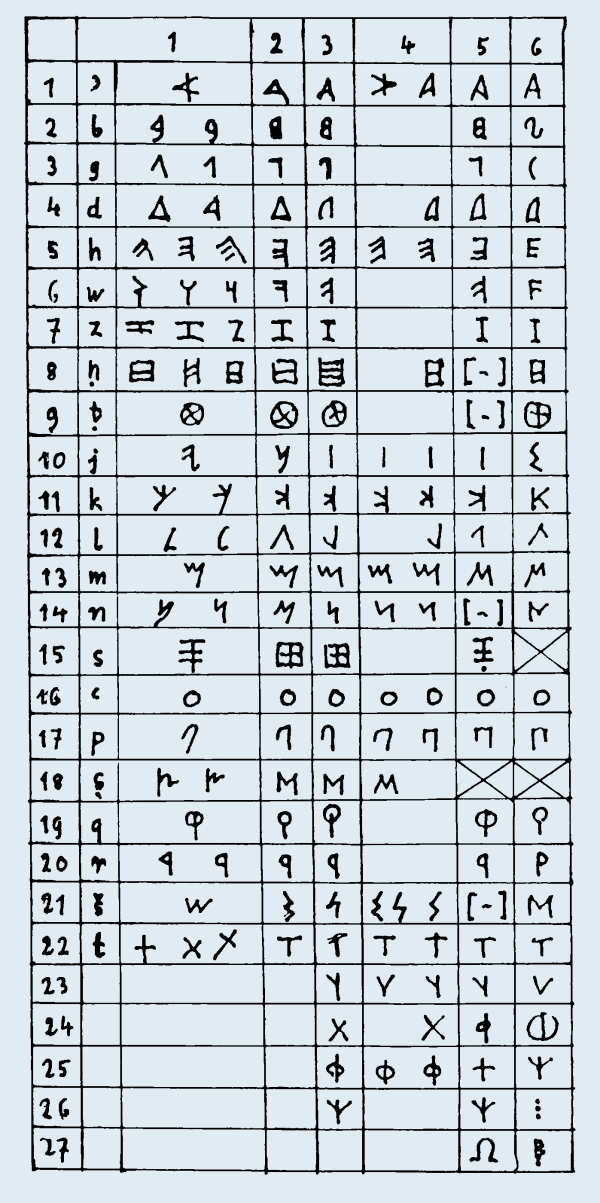
Below are Heubeck's facsimiles of the Würzburg tablet.
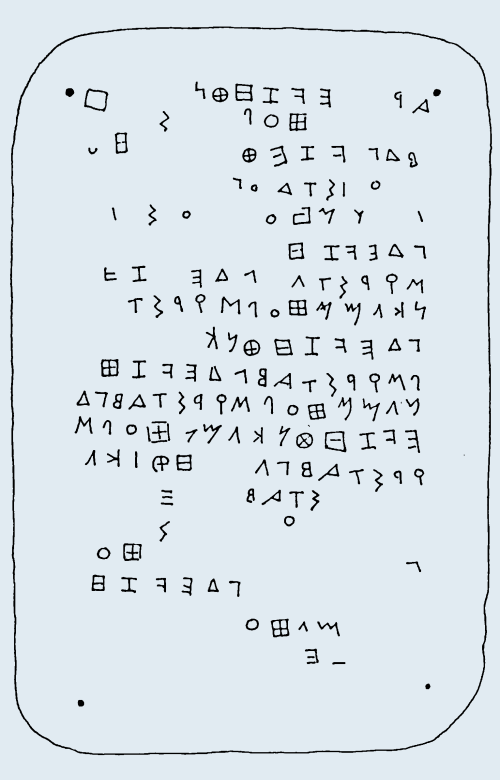
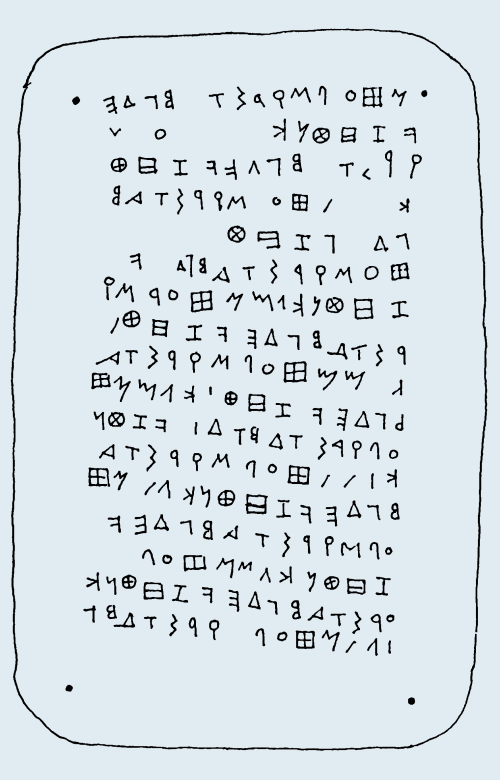
Alfred Heubeck's article can be downloaded from here.
Photos of the Fayum Tablets.
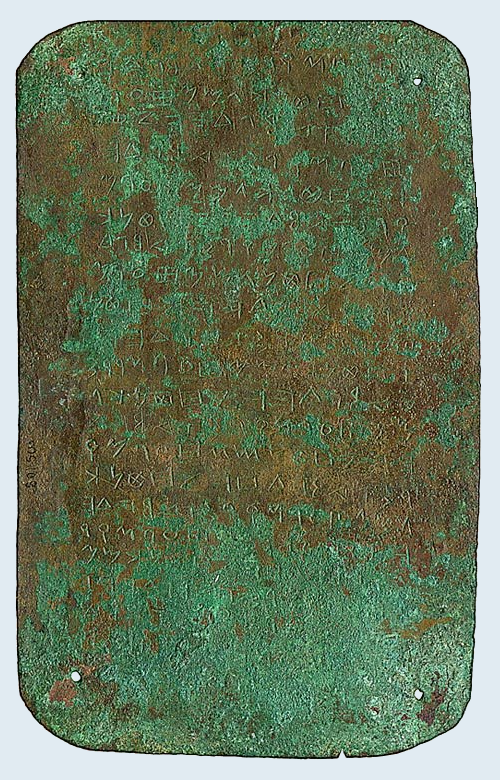
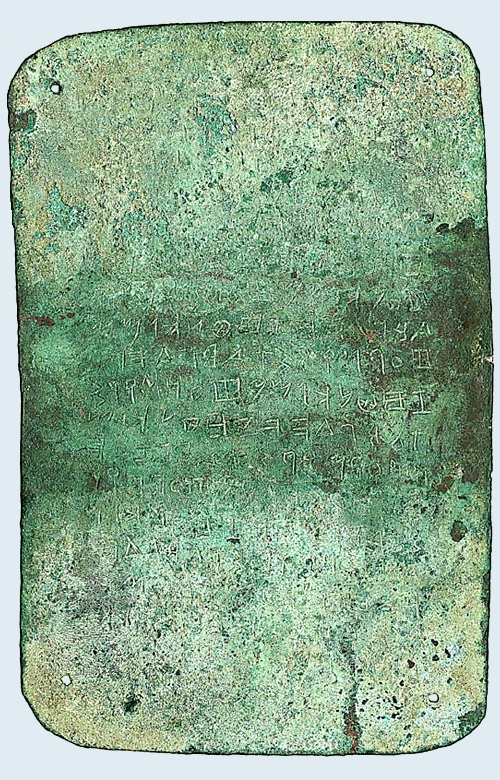
And a larger version.
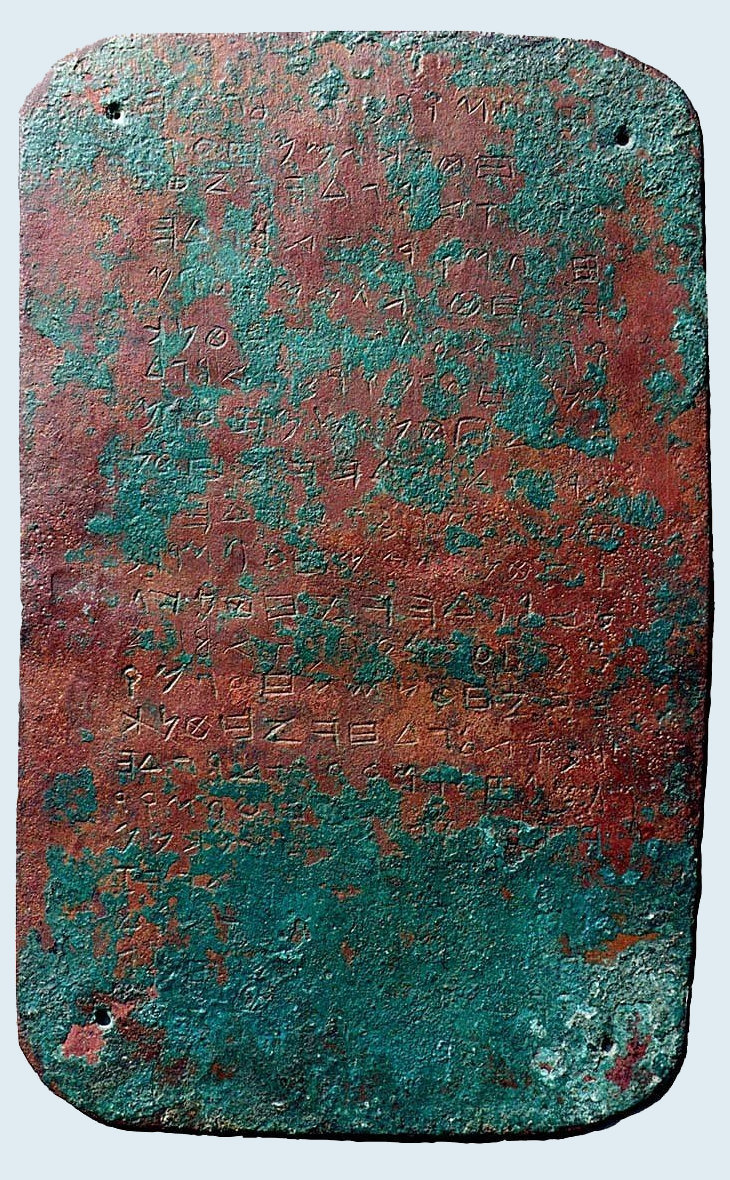
To see that Heubeck's column 2 alpha (mentioned above as inaccurate) is not representative of the alphas visible on the tablet, I have circled the alphas in red.
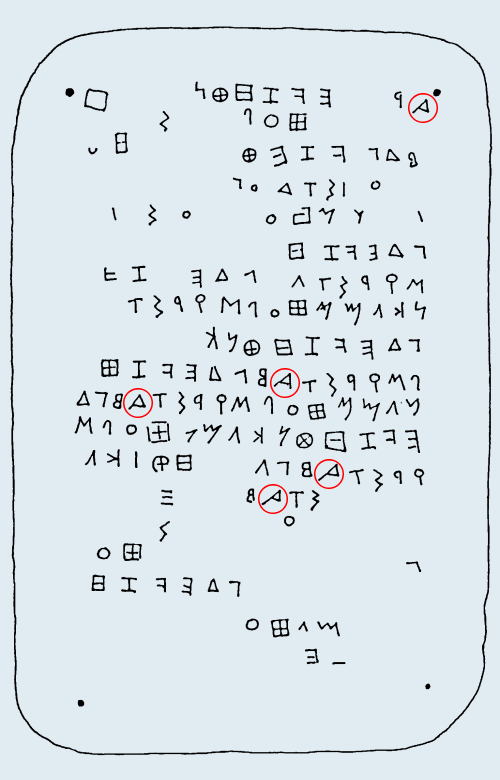
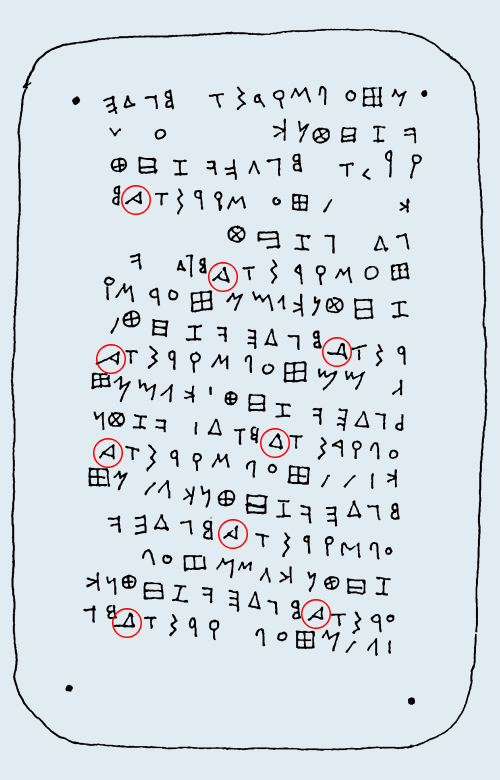
To see that Heubeck's column 2 san (mentioned above as inaccurate) is not representative of those visible on the tablet, it is necessary to view the photos (of the tablet), as Heubeck has deliberately drawn many of the san characters (of the facsimiles) incorrectly. In the following table I have compared each san character in the photos with the corresponding san character in the facsimiles. Column (2) gives the san characters from the photos. Column (1) gives Heubeck's representation of the letter. Column (3) is my representation.
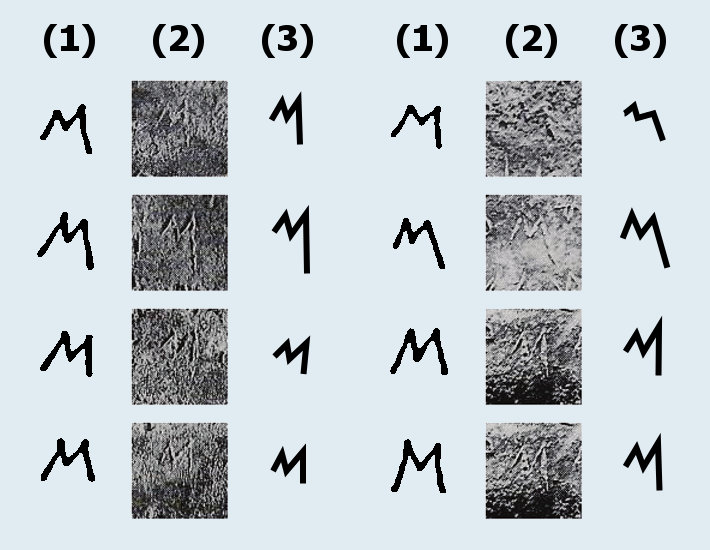
The following picture shows san characters from the Fayum Tablets.

Other popular topics are:
The COVID-19 Scam. UPDATE
Proof that Adolf Hitler was a double agent.
A large collection of photos of Jewish political leaders, e.g., Nelson Mandela, Tony Blair, Gordon Brown, etc.
There are no ancient Jewish cities in Israel, but there are lots of ancient Greek cities.
WOW; Presidents Reagan, Clinton, Bush, Obama, Trump, and Biden are Jews.
Is it too late to save Florida from Drowning? What will your beachfront property be worth in 50 years?
The free Operating System Linux running Microsoft Operating Systems on Virtual Computers (a DIY guide).
Proof that the name ADAM is of Greek origin.
